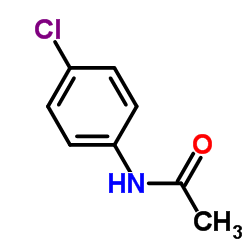Generalized cytochrome P450-mediated oxidation and oxygenation reactions in aromatic substrates with activated N-H, O-H, C-H, or S-H substituents.
L Koymans, G M Donné-Op den Kelder, J M te Koppele, N P Vermeulen
Index: Xenobiotica 23(6) , 633-48, (1993)
Full Text: HTML
Abstract
1. The general mechanism of metabolic oxidation of substrates by cytochromes P450 (P450s) appears to consist of sequential one-electron oxidation steps rather than of a single concerted transfer of activated oxygen species from P450 to substrates. 2. In case of the acetanilides paracetamol (PAR), phenacetin (PHEN), and 4-chloro-acetanilide (4-CLAA), the first one-electron oxidation step consists of a hydrogen abstraction from the acetylamino nitrogen and/or from the other side-chain substituent on the aromatic ring. The substrate radicals thus formed delocalize their spin and the respective reactive centres of the substrate radical recombine with a P450 iron-bound hydroxyl radical to either yield oxygenated metabolites, or undergo a second hydrogen abstraction forming dehydrogenated products. By this mechanism, the formation of all known oxidative metabolites of PAR, PHEN, and 4-ClAA can be explained. Furthermore, this mechanism is consistent with all available experimental data on [18O]PAR/PHEN, [2H]PAR, and [14C]PHEN. 3. The oxidative metabolic reactions proposed for the acetanilides PAR, PHEN, and 4-ClAA are used to generalize P450-mediated oxidations of these and other acetanilides, such as analogues of PAR and 2-N-acetyl-aminofluorene. 4. A further generalization of the hydrogen abstraction, spin delocalization, radical recombination concept is derived for other aromatic substrates with abstractable hydrogen atoms, notably those with activated N-H, O-H, C-H, or S-H bonds directly attached to the aromatic nucleus.
Related Compounds
| Structure | Name/CAS No. | Molecular Formula | Articles |
|---|---|---|---|
 |
4-Chloroacetanilide
CAS:539-03-7 |
C8H8ClNO |
|
Development of EPA method 535 for the determination of chlor...
2006-01-01 [J. AOAC Int. 89(1) , 201-9, (2006)] |
|
Toxicology laboratory analysis and human exposure to p-chlor...
2009-02-01 [Clin. Toxicol. (Phila.) 47(2) , 132-6, (2009)] |
|
Structural characterization and function determination of a ...
2014-06-03 [Biochemistry 53(21) , 3476-85, (2014)] |
|
HPLC separation of acetaminophen and its impurities using a ...
2012-04-01 [J. Chromatogr. Sci. 50(4) , 335-42, (2012)] |
|
On-line reaction monitoring of lithiation of halogen substit...
2011-01-01 [Chimia 65(4) , 253-5, (2011)] |